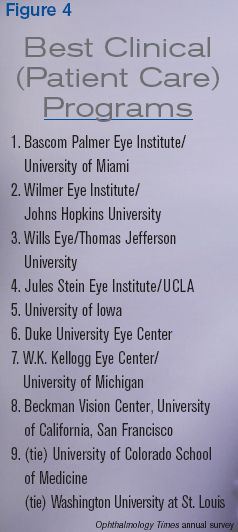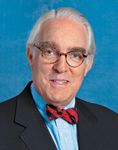Article
Wilmer, Bascom Palmer prevail in annual survey
This year's Ophthalmology Times Best Programs Survey shows that, although the very best programs are almost universally recognized, it's not the size that matters. Some smaller programs are starting to draw the attention of department chairpersons across the United States.

Key Points
Given the number of outstanding U.S. ophthalmology programs, staying at the head of the class requires innovation, a top-to-bottom commitment to excellence, and a willingness to adapt to changing needs, ideas, and technology.
This year's Ophthalmology Times Best Programs Survey shows that, although the very best programs are almost universally recognized, it's not the size that matters. Some smaller programs are starting to draw the attention of department chairpersons across the United States.

Learning from others
After more than a decade of recognition as one of the country's leading ophthalmology programs, the Wilmer Eye Institute is not one to rest on its laurels. Peter J. McDonnell, MD, director and William Holland Wilmer Professor of Ophthalmology at the institute, said he is constantly observing other schools and searching for ways to stay on top.

Such determination pushes his faculty and staff to compete with themselves and always strive to improve. Reflecting that effort, the institute is one of three in the top 10 that is in "building mode." The Wilmer Eye Institute broke ground June 6 on a $108 million, 207,000-square-foot building that Dr. McDonnell believes will house the most modern ophthalmic surgical facility and vision research center in the world.
The new building is designed to encourage interaction among scientists, with laboratories for colleagues from different science backgrounds-each tackling a disease from a unique perspective working in common "research neighborhoods."

"It's no longer a brilliant person sitting in an office or lab thinking of great ideas," he said. "It's teams working together to make the breakthroughs."
Such collaboration will be encouraged with pathways through the building designed to encourage informal conferences as researchers bump into colleagues on the way to the coffee shop. The building is expected to be complete in June 2009.
Newsletter
Don’t miss out—get Ophthalmology Times updates on the latest clinical advancements and expert interviews, straight to your inbox.




